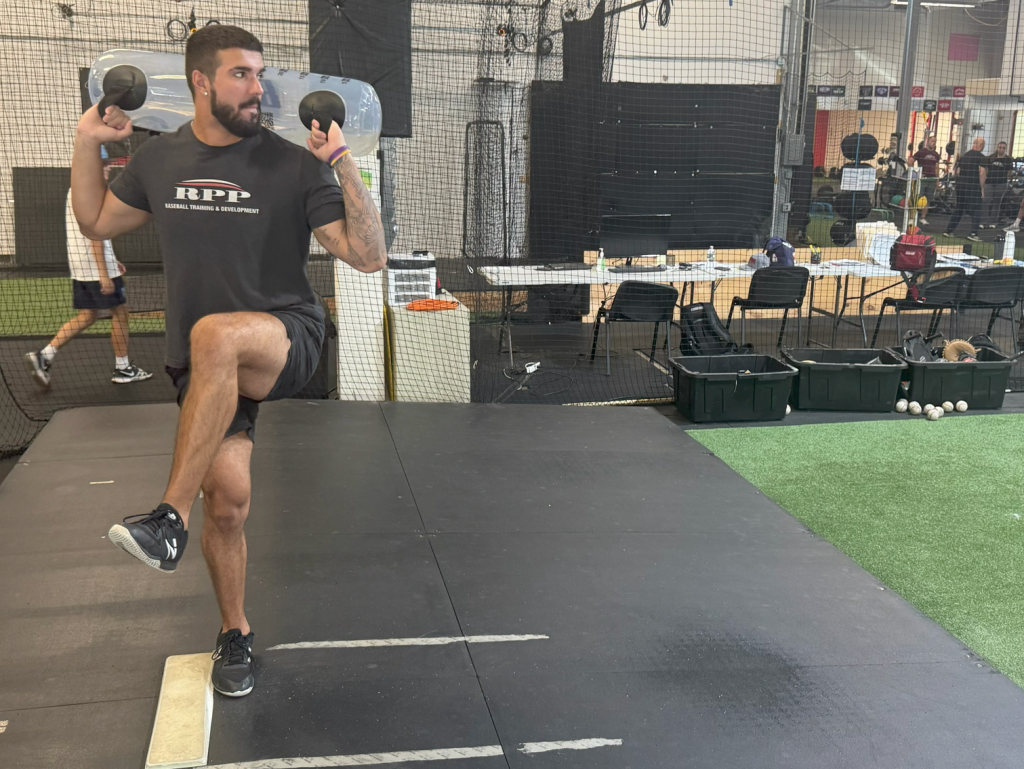
DNS or “Dynamic Neuromuscular Stabilization” is a training method that was developed by Czech physiotherapist Pavel Kovar in the 1990’s and was brought to the forefront of training 10 years ago with the release of Frans Bosch’s book, “Strength Training and Coordination”. It’s fair to say that it has since struck the baseball player development realm by storm.
It emphasizes training both the brain and muscles to work together effectively. Through specific drills and exercises prescribed by our coaches, they improve the body’s ability to move efficiently and without pain by focusing on relearning the natural movement patterns that develop from infancy, leading to improved performance and efficient and precise movements that become automatic.
The improved muscle connection will reduce injury risk while also increasing coordination and stability. This training concept can be utilized in a variety of ways, however, it can assist baseball players in improving rotational capabilities, body sequencing, and while being more “reactive” with their throwing mechanics.
In a nutshell, DNS drills are strength and conditioning / plyometrics drills that can help improve movement patterns and overall athleticism.
Implementation
When it comes to implementing DNS drills, we utilize waterbags and water balls in order to help them reach the athletic positions we look for throughout their throwing motions. Our goal in prescribing these drills is for pitchers to sequence their delivery efficiently while allowing little time to think about it. This method begins with the athlete performing an exercise or prescribed throwing drill with one of our waterbags.
The instability in the waterbags create unstable movements which force the athlete to quickly recruit muscles he may not have used before. He then performs the same or similar throwing drill(s) that is paired up with the prescribed DNS exercise
Drill Progression
The drill selection is based on a three simple progression / methods:
-
- Grounded
- Dynamic
- Transitional
Let’s take a look at each of these and define what they mean from a training standpoint.
Grounded – Even though all movement is proximal (the core) to distal (the arm), working from the ground up in stationary positions allows the athlete to create a stable base (the lower half) to fire from.
Water Ball Figure 8
Figure 8 Rocker
Dynamic – Same principles apply from the grounded drills (working from the ground up), the only difference now is we are going to be utilizing movement and momentum.
Water Bag Turn & Burn
Turn and Burn
Transitional – Once the athlete is able to successfully complete the Grounded and Dynamic drills we can now progress to transitional movements, which prepares them best for the positions they need to achieve in competition. These are generally done on the mound.
Waterbag Payano’s
Walking Torques
Summary
DNS is a training method that helps increase coordination and stability. Here at RPP, we fold them into our throwing program in order to help sequence the delivery efficiently while allowing little time to think about it. This type of training can be integrated at any time of year and is a fantastic training tool to prescribe pitchers to help improve their ability to self-organize in a quicker, more efficient manner.
We never want to leave any stones unturned, so including drills and concepts that will improve the mind / muscle connection will ultimately optimize the efficiency of an athlete’s movement patterns.
By Niko Leontarakis – MS, CSCS, Director of Pitching at RPP Baseball
